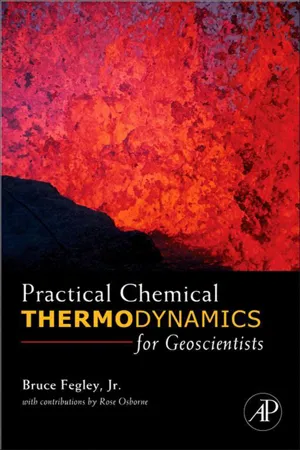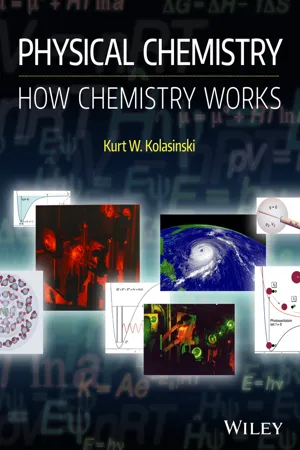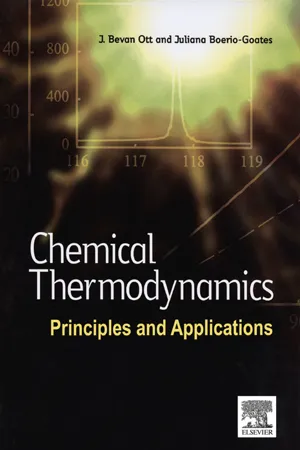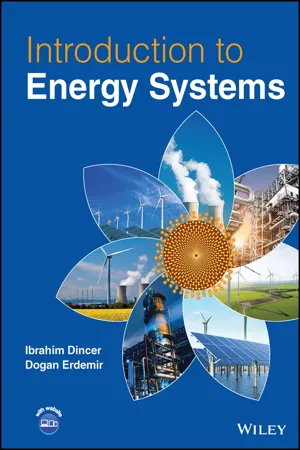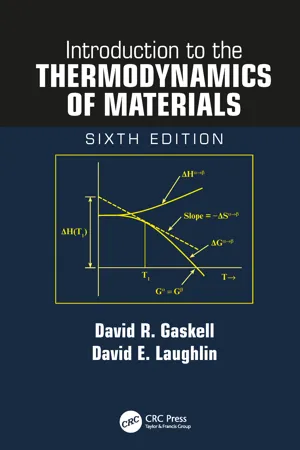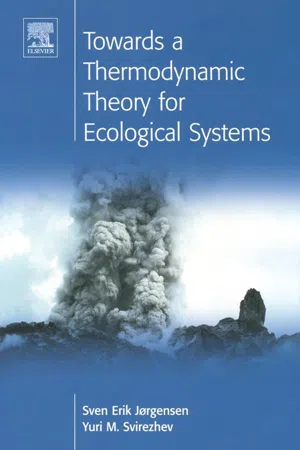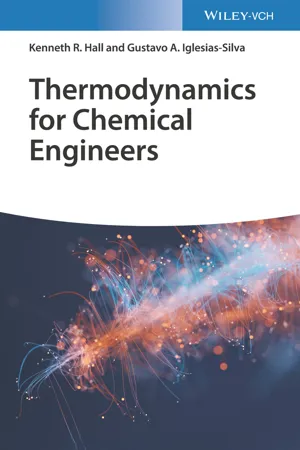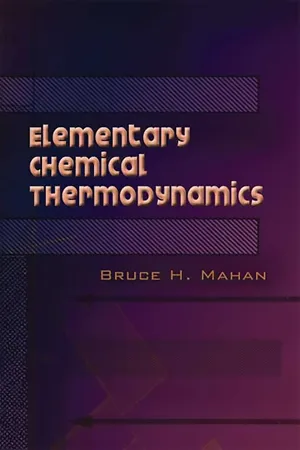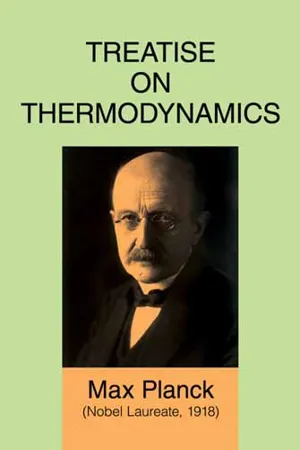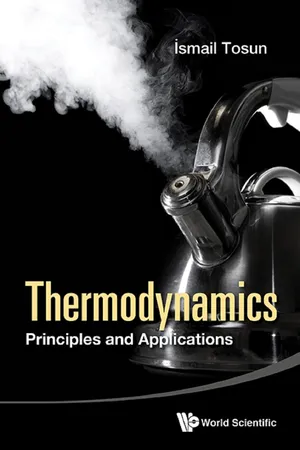Technology & Engineering
Third Law of Thermodynamics
The Third Law of Thermodynamics states that as the temperature of a system approaches absolute zero, the entropy of the system also approaches zero. This law implies that it is impossible to reach absolute zero temperature through any finite number of processes. It has important implications for understanding the behavior of matter at extremely low temperatures and in the design of technologies such as superconductors and refrigeration systems.
Written by Perlego with AI-assistance
Related key terms
Related key terms
1 of 4
Related key terms
1 of 3
12 Key excerpts on "Third Law of Thermodynamics"
- Bruce Fegley Jr.(Author)
- 2012(Publication Date)
- Academic Press(Publisher)
Chapter 9
The Third Law of Thermodynamics
If the entropy of each element in some crystalline state be taken as zero at the absolute zero of temperature: every substance has a finite positive entropy, but at the absolute zero of temperature the entropy may become zero, and does so become in the case of perfect crystalline substances.—Lewis and Randall (1923)The Third Law of Thermodynamics is the subject of this chapter. The third law is important because it states that entropy is an absolute quantity that can be determined from calorimetric measurements of the heat capacity and enthalpies of transition of a material such as forsterite. We can thus compute the Gibbs free energy of a chemical reaction using only thermochemical data (the absolute entropies and standard enthalpies of formation for reactants and products).There are four sections in this chapter. Section I describes the historical development of the Nernst heat theorem, which is the forerunner of the Third Law of Thermodynamics. Section II states the third law and examines some of its important consequences. Section III discusses the third law and entropy and describes the different contributions to the total entropy of a material. Section IV discusses calculation of absolute entropies from heat capacity data, introduces the Gibbs function [(GT o– H 298 o )/T ], and describes the use of the third law for computing Gibbs free energies of reaction from calorimetric data.I Historical Development of the Nernst Heat Theorem
During the latter half of the 19th century, chemists began to use the first and second laws of thermodynamics in their research. They wanted to predict the direction and driving force of chemical reactions and the extent to which different reactions would occur. Once this information was available for a particular reaction, the optimal pressure and temperature could be used to maximize the amount of a desired product. One example is the synthesis of ammonia, which is essential for production of synthetic fertilizers to increase agricultural production. Initially, chemists thought that the enthalpy of reaction could be used to predict which reactions would occur. Everyday experience showed that many spontaneous reactions, such as coal burning in air, acids dissolving in water, metals dissolving in acids, or explosions, produced heat. Thus, the French chemist Marcellin Berthelot and the Danish chemist Julius Thomsen undertook extensive measurements of the heats of formation for thousands of substances (see their biographical sidebars in Chapter 5 ). In the 1850s, Thomsen proposed that all spontaneous reactions generate heat. In the 1860s, Berthelot proposed a similar concept, the principle of maximum work- eBook - ePub
Physical Chemistry
How Chemistry Works
- Kurt W. Kolasinski(Author)
- 2016(Publication Date)
- Wiley(Publisher)
Third Law of Thermodynamics:Mathematically, this was stated by Planck asThe entropy of a pure, perfectly crystalline substance is zero at 0 K.The entropy of any system vanishes in the state for which(9.59)The advantage of this formulation is that it allows us to calculate absolute molar entropies. It also facilitates the calculation of equilibrium constants solely on the basis of thermochemical measurements. We need to specify that the system is at internal equilibrium because it is possible for a system to get trapped into a long-lived nonequilibrium state. One example of such is a glass. Hence, the Planck formulation specifies a crystalline substance rather than a solid of any form. Nuclear spin interactions in the absence of a magnetic field produce extremely weak interactions. So weak, in fact, that the energy level spacing is still significantly smaller than thermal energy even at 1 K. Randomly oriented nuclear spins can induce significant disorder that does not relax until the temperature is well below 1 K.9.8 The unattainability of absolute zero
Consideration of the limits of the universe can lead to consideration of our limits to consider. Thus, we are left to ponder a consequence of the Third Law that some consider to be a statement of the Third Law:A state with a temperature of absolute zero is unattainable through any process composed of a finite number of steps.Conceptually, we can argue this way. To lower the temperature of a system by an amount dT, we need to extract an amount of heat dq. We know the relationship between these two variables is given by dq = C dT - eBook - ePub
Chemical Thermodynamics: Principles and Applications
Principles and Applications
- J. Bevan Ott, Juliana Boerio-Goates(Authors)
- 2000(Publication Date)
- Academic Press(Publisher)
Chapter 4The Third Law and Absolute Entropy Measurements
In the previous chapter, we saw that entropy is the subject of the Second Law of Thermodynamics, and that the Second Law enabled us to calculate changes in entropy ΔS . Another important generalization concerning entropy is known as the Third Law of Thermodynamics . It states that:Every substance has a finite positive entropy, but at the absolute zero of temperature the entropy may become zero, and does so become in the case of a perfect crystalline substance .1As with the first and second laws, the Third Law is based on experimental measurements, not deduction. It is easy, however, to rationalize such a law. In a perfectly ordereda crystal, every atom is in its proper place in the crystal lattice. At T = 0 Kelvin, all molecules are in their lowest energy state. Such a configuration would have perfect order; and since entropy is a measure of the disorder in a system, perfect order would result in an entropy of zero.b Thus, the Third Law gives us an absolute reference point and enables us to assign values to S and not just to AS as we have been restricted to do with U, H, A , and G .To obtain S , we start with equation (3.15) from the previous chapter(3.15)Separating variables and integrating gives(4.1)According to the Third Law, S 0 = 0 and equation (4.1) becomes(4.2)Equation (4.2) can be used to determine the entropy of a substance. A pure crystalline sample is placed in a cryogenic calorimeter and cooled to low temperatures. Increments of heat, q , are added and the temperature change, ΔT , is measured, from which the heat capacity can be calculated from the relationship(4.3)Equation (4.3) is exactly true only if q is an infinitesimal amount of heat, causing an infinitesimal temperature rise, dT . However, unless the heat capacity is increasing rapidly and nonlinearly with temperature, equation (4.3) gives an accurate value forCpat the average temperature of the measurement.c Continued addition of heat gives the heat capacity as a function of temperature. The results of such measurements for glucose are shown in Figure 4.1 .2 - eBook - ePub
- Ibrahim Dinçer, Dogan Erdemir(Authors)
- 2023(Publication Date)
- Wiley(Publisher)
Figure 3.3 . As the clock does not move from 1 to 3 by skipping 2, one should follow all these steps accordingly for true analysis and performance assessment in thermodynamics. The figure shows that the starting point is the property, which is defined as the specific characteristic of a system (for example, pressure, temperature, etc.). The next stop is the state, which is defined as the condition at any system (for example, inlet condition, exit condition, etc.), and it essentially requires minimum two of the properties, so the states depend essentially upon the properties. The third one is the process, which is defined as a change from one state to another (for example, isothermal process, isobaric process, etc.), and it essentially requires minimum two state points to make a process. The fourth one is the cycle, which is defined as the meaningful set of processes to generate something useful before reaching back to the original starting point (for example, steam cycle, air-standard cycle, etc.), and it essentially requires minimum two of the thermodynamic processes to construct it. The next stop is the first law of thermodynamics (FLT), which is defined as the conservation of energy law, referring to the fact that neither is created nor destroyed, but changes form (for example, from heat to work in thermal power plant and from work to heat or cold in a heat pump or refrigeration unit). The sixth stop is the second law of thermodynamics (SLT), which is defined as the non-conservation of exergy law, referring to the fact that there are irreversibilities taking place in any practical system in the form of entropy generations and exergy destructions. It is also an indication of how much deviation takes place from reversible to irreversible behavior. The last stop is the performance assessment where one needs to evaluate the system performance through energy and exergy efficiencies or energetic or exergetic coefficient of performance values or other energy and exergy performance criteria.Seven steps to follow in thermodynamic system analysis and assessment.Figure 3.3In this chapter, first, the zeroth and third laws of thermodynamics are introduced. Then, a smart approach for performing a complete thermodynamic analysis is presented. For this purpose, a seven-step approach is descripted. Next, the first and second laws of thermodynamics are defined. This is followed by the presentation of four thermodynamic balance equations for common devices. Finally, illustrative examples are provided to readers.3.2 Zeroth and Third Laws of Thermodynamics
The zeroth law of the thermodynamics (ZLT) is often defined over an illustrative sketch, as shown in Figure 3.4 - eBook - ePub
The Language of Modern Physics
An Introduction to the Philosophy of Science
- Ernest H. Hutten(Author)
- 2022(Publication Date)
- Routledge(Publisher)
The three laws of thermodynamics deal with the conservation of energy, the dispersal or degradation of energy, and the zero-point of temperature and of energy. (Only the third law, referring to the experimental fact that we can never cool down any body to the zero-point of the absolute temperature scale, might be taken to indicate a genuine limitation of experience; but caution is required when we speak in this manner, as will be discussed in section 4.6.) The ideas expressed by the laws are applicable to all phenomena. The laws speak about physical systems—that is, aggregates of physical objects. The system is characterized by the state in which it may be, and the laws give the dependence of this state upon certain variables referring to observable properties. We must analyse what we mean by ‘energy’, ‘system’, and ‘state’ as well as define terms such as ‘temperature’, and ‘heat’, within this context.Finally, the second law of thermodynamics—the entropy law—is in contrast to any other law of physics since it refers explicitly to time in a unique manner. According to the laws of both Newton and Maxwell any possible course of events may be reversed. According to the second law it appears that we cannot exchange the positive for the negative sign in front of ‘t’—the symbol referring to time—without making the equation invalid. This characteristic has made the second law one of the most widely discussed laws of physics. But let us point out that Fourier’s equation of heat flow is of the same type and no one has ever found this equation very mysterious. In other words, it may be rash to jump to conclusions from the mathematical form of an equation alone; its interpretation is what matters, in this instance, the meaning of ‘entropy’.But here again, as will be discussed later in more detail, the generality of the thermodynamical laws has led to misunderstanding. The laws are extrapolated over and above all reasonable limits, e.g. they are sometimes applied to the universe at large. Moreover, the difference between thermodynamics and all other parts of classical physics is well grounded. There is really no justification for believing that entropy should possess an analogue in the laws of mechanics, for instance. The customary division into various, phenomenologically described, disciplines that is introduced by elementary text-books has helped to create this confusion. It suggests that heat phenomena are, so to speak, on the same level as those of mechanics or of electricity; thus we feel surprised that there is such decisive difference, or that thermodynamics is not really assimilated to field physics. - eBook - ePub
- David R. Gaskell, David E. Laughlin(Authors)
- 2017(Publication Date)
- CRC Press(Publisher)
3 The Second Law of Thermodynamics 3.1INTRODUCTIONIn Chapter 2 , it was seen that when a system undergoes a change of state, the consequent change in the internal energy of the system is dependent only on the initial and final states and is equal to the algebraic sum of the thermal energy, q , and work, w , effects. Two questions now arise.1.What magnitudes may the q and w effects have?2.What criteria govern these magnitudes? Two extreme cases related to the first question can occur.•w = 0 and q = ∆U′•q = 0 and w = –∆U′But if q ≠ 0 and w ≠ 0, a third question arises.3.Is there a definite limit to the amount of work which the system can do during its change of state?The answers to these questions require an examination of the nature of the processes which affect q and w . This examination, which is made in this chapter, identifies two types of processes (reversible and irreversible processes) and introduces a state function called the entropy (S ).The concept of entropy will be introduced from two different starting points. In Sections 3.2 through 3.8, entropy will be seen as a quantification of the degree of irreversibility of a process. In Sections 3.10 through 3.14, it will be seen that, as a result of an examination of the properties of reversibly operated heat engines, there naturally develops a quantity which has all the properties of a thermodynamic state function. This state function is the entropy. These findings lead to a statement of the Second Law of Thermodynamics, which, together with the other laws of thermodynamics lay the foundation for the thermodynamic method of describing the behavior of matter to be discussed in the text.3.2SPONTANEOUS OR NATURAL PROCESSESA system left to itself will do one of two things: it may remain in the state in which it happens to be or it may change of its own accord to some other state. That is, if the system is initially in equilibrium with its surroundings, then, left to itself, it will remain in this equilibrium state. On the other hand, if the initial state is not the equilibrium state, the system will spontaneously* (i.e., without any external influence) move toward its equilibrium state. The equilibrium state is a state of rest (at least at the macroscopic level), and thus, once at equilibrium, a system will only move away from equilibrium if it is acted on by some external agency. Even then, the combined system, comprising the original system and the external agency, is simply moving toward the equilibrium state of the new combined system. A process which involves the spontaneous movement of a system from a nonequilibrium state to an equilibrium state is called a natural or spontaneous process. Since such a process cannot be reversed without the application of an external agency which leaves a permanent change in this agency, such a process is said to be irreversible . The terms natural , spontaneous , and irreversible - S.E. Jorgensen, Y.M. Svirezhev(Authors)
- 2004(Publication Date)
- Pergamon(Publisher)
Lurie and Wagensberg, 1979 ).Fig. 3.1 A typical temporal pattern of the heat production by the fertilised amphibian egg.Fig. 3.1 is a good illustration to Prigogine’s theorem: one can see that the entropy production for a rather large period of time is a monotonous decrease with time tending to a certain positive value.3.4 The Third Law of Thermodynamics applied on open systems
The First Law of Thermodynamics is often applied to ecosystems, first of all when the energy balances of ecosystems are made. Also, the Second Law of Thermodynamics is applied to the ecosystem when we consider the entropy production of ecosystems as a consequence of the maintenance of the system far from thermodynamic equilibrium. This section is concerned with the application of the Third Law of Thermodynamics to ecosystems (see also Chapter 2 ).The lesser-known Third Law of Thermodynamics states that the entropies, S 0 , of pure chemical compounds are zero, and that entropy production, ΔS 0 , by chemical reactions between pure crystalline compounds is zero at absolute temperature, 0 K. The Third Law implies, since both S 0 = 0 (absolute order) and ΔS 0 = 0 (no disorder generation), that disorder does not exist and cannot be created at absolute zero temperature. But at temperatures higher than zero of Kelvin, disorder can exist (S > 0) and be generated (ΔS > 0). The Third Law defines the relation between entropy production, ΔS , and the Kelvin temperature, T :Δ S =∫ 0 TΔc pd ln T + ΔS 0(4.1)where Δc p is the increase in heat capacity by the chemical reaction. Since order is absolute at absolute zero, its further creation is precluded there. At higher temperatures, however, order can be created.Entropy production implies degradation of energy from a state of high utility (large T ) to a state of low utility (small T ); compare also Carnot’s Cycle (see Chapter 5 ). Ecosystems have, in other words, a global attractor state, the thermodynamic equilibrium, but will never reach this state as long as they are not isolated and receive exergy (energy that can do work; see Chapter 5- eBook - ePub
- Kenneth Richard Hall, Gustavo Arturo Iglesias-Silva(Authors)
- 2022(Publication Date)
- Wiley-VCH(Publisher)
4 Second Law of Thermodynamics4.1 Introduction
We have learned that energy is a conserved variable and that transformations of energy follow the first law of thermodynamics. The second law, like the first law, is a part of normal human experience (except it is easier to observe its effects directly that those of the first law). Using the second law, we can determine the unique direction in which a spontaneous process proceeds, and how this direction relates to equilibrium (because spontaneous processes always proceed in the direction of equilibrium). For example, a stone can fall until it hits the ground, a perfume (concentrated solution) can disperse into the air (dilute solution) until it reaches a certain concentration, when two objects are in close contact excluding any interaction between them and their surroundings, the cold one always becomes hotter and the hot one becomes cooler. In other words, we must conserve energy, but we cannot do it just anyway we wish!We know from experience that the above examples occur in a specified direction, but the second law tells us mathematically why they must proceed in those particular directions. Interestingly, we can apply the first law to a system moving in either direction, and formulate an expression for each path (the expression is the same but with opposite signs), but the first law cannot determine the correct direction. In general, natural processes (removed from external forces) proceed toward a state of macroscopic rest with uniform distributions of temperature and concentration. In other words, natural processes proceed only in one direction, and they cannot return spontaneously to their original states without assistance from external forces.How can we relate the second law to our everyday experiences? We know that it can tell us if a process can proceed in certain directions, but we also can include the efficiency - eBook - ePub
- Bruce H. Mahan(Author)
- 2013(Publication Date)
- Dover Publications(Publisher)
IIIThe Second Law of Thermodynamics
T HE FIRST LAW of thermodynamics expresses the repeated experimental observation that, while it may be transferred between a system and its surroundings, energy is never created or destroyed. Therefore, we propose that the conservation of energy is a minimum requirement which every real process must satisfy. However, a little reflection shows that naturally occurring processes have a feature which is completely inexplicable on the basis of the first law of thermodynamics. This is best understood by consideration of some simple examples.The first example involves the apparatus shown in Fig. 3–1 . Two bulbs are connected by a stopcock; bulb A contains an ideal gas, while bulb B is evacuated. When the stopcock is opened, gas inevitably flows from A to B. It is observed that the system remains at a constant temperature; thus, the process is an isothermal irreversible expansion of an ideal gas. In Chap. 2 we learned that for any isothermal expansion of an ideal gas ΔE = 0. Moreover, there is no mechanical link between our system and its surroundings, so we have w = 0, and consequently q = 0. Despite the fact that the system is not prodded by an interaction with its surroundings, the expansion occurs spontaneously, once the stopcock is opened. Now, the reverse process, in which all the molecules in bulb B spontaneously return to bulb A, would also have q = w =E= 0, and according to the first law of thermodynamics this would be a perfectly possible occurrence. However, such a spontaneous concentration of the gas in a totally isolated system has never been observed, and consequently we presume it is impossible.Figure 3–1 Apparatus for the irreversible expansion of a gas. Bulb A contains the ideal gas; bulb B is initially evacuated.There are other instances in which systems change in a predictable way but, left to themselves, never return to their original condition. When two blocks of material, one hot and the other cold, are brought together, the temperature of each block changes until the two reach some uniform intermediate temperature. The flow of heat from the hot to the cold block is spontaneous; it proceeds unaided once the blocks are in contact. On the other hand, two isolated bodies in contact and initially at the same temperature have never been observed to depart from temperature uniformity. In order for them to do so, it would be necessary eventually for heat to flow unaided from a cold body to a hot body. This has never been observed, and we state with some confidence that it can never happen. Yet such a process would certainly not violate the first law of thermodynamics, since the energy lost by the cold body would be exactly equal to that gained by the hot body. - eBook - ePub
- Max Planck(Author)
- 2013(Publication Date)
- Dover Publications(Publisher)
PART III. T HE S ECOND F UNDAMENTAL P RINCIPLE OF T HERMODYNAMICS. CHAPTER I. INTRODUCTION. § 106. THE second law of thermodynamics is essentially different from the first law, since it deals with a question in no way touched upon by the first law, viz. the direction in which a process takes place in nature. Not every change which is consistent with the principle of the conservation of energy satisfies also the additional conditions which the second law imposes upon the processes, which actually take place in nature. In other words, the principle of the conservation of energy does not suffice for a unique determination of natural processes. If, for instance, an exchange of heat by conduction takes place between two bodies of different temperature, the first law, or the principle of the conservation of energy, merely demands that the quantity of heat given out by the one body shall be equal to that taken up by the other. Whether the flow of heat, however, takes place from the colder to the hotter body, or vice versâ, cannot be answered by the energy principle alone. The very notion of temperature is alien to that principle, as can be seen from the fact that it yields no exact definition of temperature. Neither does the general equation (17) of the first law contain any statement with regard to the direction of the particular process. The special equation (50), for instance,., means only that, if hydrogen and oxygen combine under constant pressure to form water, the re-establishment of the initial temperature requires a certain amount of heat to be given up to surrounding bodies; and vice versâ, that this amount of heat is absorbed when water is decomposed into hydrogen and oxygen. It offers no information, however, as to whether hydrogen and oxygen actually combine to form water, or water decomposes into hydrogen and oxygen, or whether such a process can take place at all in either direction - eBook - ePub
Thermodynamics
Principles and Applications
- İsmail Tosun(Author)
- 2015(Publication Date)
- WSPC(Publisher)
Chapter 4The First Law of Thermodynamics
According to the first law of thermodynamics, energy is converted from one form to another and transferred from one system to another but its total is conserved. The purpose of this chapter is first to show how to formulate this statement mathematically for different types of systems, and then apply these equations to solve energy related engineering problems.4.1The First Law for a Closed SystemAs stated in Section 2.2.4, the energy associated with microscopic motions and forces is called an internal energy. Since this energy cannot be seen, it is usually separated from the macroscopic, i.e., measurable, mechanical energy so as to express the total energy of the system asE = U + EK + EP(4.1-1) Consider a closed system receiving energy, in the form of heat and work, from its surroundings as shown in Fig. 4.1. The first law of thermodynamics states that the total energy of the universe is constant, i.e.,
In other words, the change in the total energy of the universe is zero:Euniverse = constant(4.1-2) ΔEuniverse = 0(4.1-3)Since the universe is composed of the system and its surroundings, then Eq. (4.1-3) can be expressed in the form
Fig. 4.1 A closed system receiving heat and work from the surroundings. The increase in the total energy of the system is given byΔEsys +ΔEsurr = 0(4.1-4)
On the other hand, the decrease in the total energy of the surroundings is given byΔEsys = ΔU + ΔEK+ ΔEP(4.1-5)
Substitution of Eqs. (4.1-5) and (4.1-6) into Eq. (4.1-4) givesΔEsurr = –Q –W(4.1-6) (4.1-7) which is known as the first law of thermodynamics for a closed system. In differential form, Eq. (4.1-7) is expressed as1
If the changes in kinetic and potential energies are negligible, then Eq. (4.1-7) reduces todU + dEK + dEP = δQ + δW (4.1-8) (4.1-9) The term W - eBook - ePub
- Irving Granet, Jorge Alvarado, Maurice Bluestein(Authors)
- 2020(Publication Date)
- CRC Press(Publisher)
Figure 5.22 .5.6 Review
The reasoning in this chapter is more abstract than in previous chapters and therefore may present more difficulty for students. Starting with the definition of thermal efficiency, we then continued with the statement of the second law of thermodynamics. For our purposes, the second law of thermodynamics can be stated as “Heat cannot, of itself, flow from a lower temperature to a higher temperature.” Based on the second law and the concept of reversibility, we were able to reason out the three general conclusions that Carnot arrived at:- 1. No engine operating between fixed source (T 1 ) and sink (T 2 ) temperatures and continuously delivering work can be more efficient than a reversible engine operating between these same temperature limits.
- 2. The efficiency of all reversible cycles operating between the same temperature limits is the same.
- 3. The thermal efficiency of a reversible engine is a function solely of the upper and lower temperatures of the cycle and is not a function of the working substance used in the cycle.
In 1824, Sadi Carnot proposed a reversible cycle consisting of two constant-temperature and two adiabatic processes. The utility of this cycle lies in the ease with which we were able to calculate its thermal efficiency using the temperature function proposed by Kelvin. This is the absolute thermodynamic temperature, which coincides with our earlier definition of absolute temperature. We thus became able to determine the limiting efficiency of any cycle operating between upper and lower temperature limits by calculating the thermal efficiency of the Carnot cycle between the same temperature limits. This definition of the absolute thermodynamic temperature combined with the Carnot cycle also enabled us to define a new property called entropy. The property entropy was also shown to be a measure of the unavailability of energy that occurs in an irreversible process. Using the energy equation for a reversible, nonflow process enabled us to derive some general relations among entropy, enthalpy, and internal energy.
Index pages curate the most relevant extracts from our library of academic textbooks. They’ve been created using an in-house natural language model (NLM), each adding context and meaning to key research topics.
Explore more topic indexes
Explore more topic indexes
1 of 6
Explore more topic indexes
1 of 4
